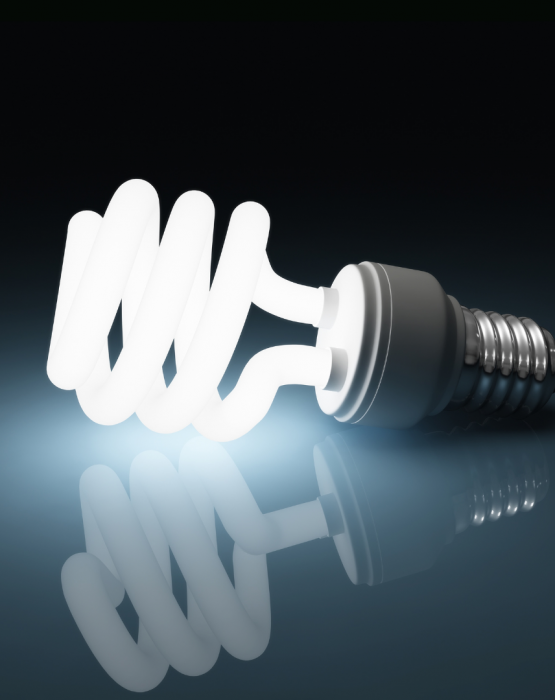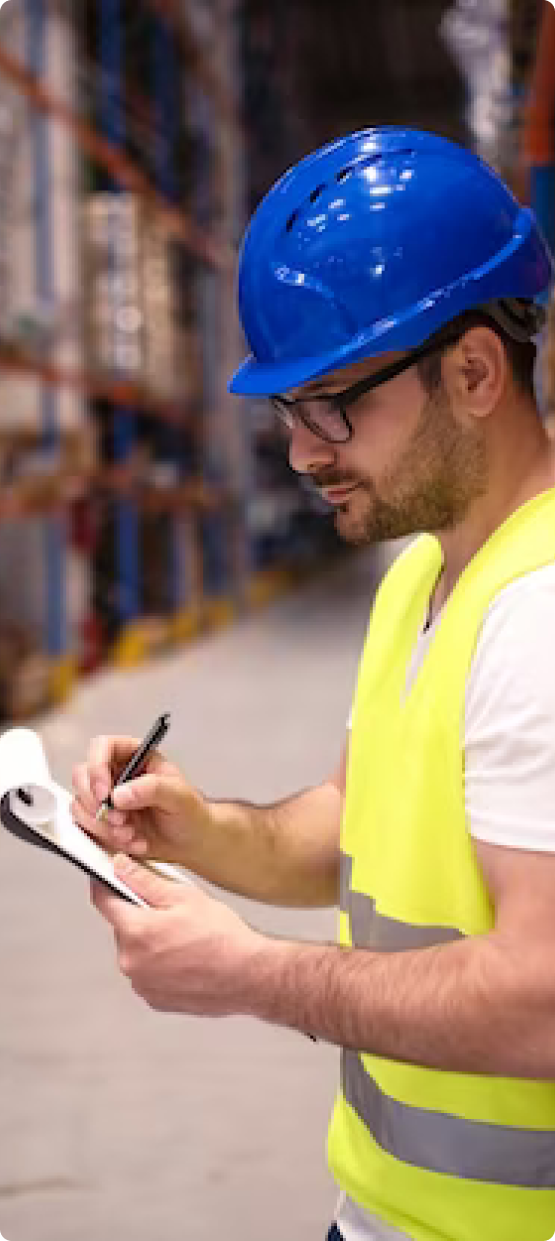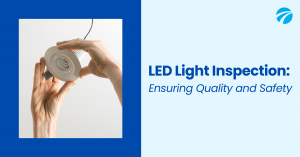Lighting Inspection Expertise - Lighting Quality Control Expertise
LIGHTING INSPECTION
Lighting Inspection Expertise – Lighting Quality Control
Lighting inspection is more than just a visual check. It involves specialized tools, techniques, and expertise to analyze factors shaping your lighting experience.
It’s a fundamental aspect of quality control, assessing luminaires, fixtures, bulbs, and components for functionality, performance, and regulatory compliance.
Tetra Inspection is a global leader in lighting inspection services. Our highly experienced team of inspectors is well-versed with the lighting quality control standards. It can help you ensure that your lighting products meet the highest standards of safety, efficiency, and visual comfort.
To ensure your lighting products are safe and compliant, book a comprehensive lighting inspection today.
LIGHTING INSPECTION
Importance Of Lighting Inspection
Lighting inspection is a crucial component of quality control in various industries, as it ensures that the lighting systems meet the necessary standards for efficiency, safety, and performance. Effective lighting not only enhances visibility but also impacts productivity, mood, and overall well-being. Here are five important aspects to consider during a lighting inspection:
Illumination Levels and Uniformity:
Adequate illumination is essential for creating a safe and productive environment. During an inspection, it’s important to measure and verify that the lighting levels meet the required standards for the specific setting. This involves using light meters to measure illuminance (lux or foot candles) at various points in the space. Additionally, assessing the uniformity of light distribution ensures that there are no overly bright or dim areas, preventing discomfort and potential safety hazards.
Energy Efficiency and Sustainability:
Lighting inspections play a pivotal role in assessing energy efficiency. By inspecting the lighting system, experts can identify outdated or inefficient fixtures that might be consuming excess energy. Upgrading to energy-efficient LED lighting can significantly reduce energy consumption and operating costs. In addition, focusing on sustainability involves ensuring that the materials used in the lighting system are environmentally friendly and recyclable.
Proper maintenance is essential to ensure that lighting systems continue to perform optimally over time. During inspections, it’s important to check for signs of wear, such as degraded light output, discoloration, or flickering. Timely replacement of worn-out components, such as ballasts or LED drivers, is crucial to avoid disruptions in lighting quality. Additionally, inspecting the fixtures for dust and dirt buildup is important, as these factors can reduce light output and efficiency.
Color Rendering Index (CRI) and Color Temperature:
The CRI measures how accurately a light source represents the colors of objects compared to natural sunlight. A higher CRI value indicates better color rendition. The color temperature, measured in Kelvin (K), defines the perceived warmth or coolness of the light. It’s crucial to verify that the CRI and color temperature align with the intended application. For instance, a high CRI is crucial in areas where accurate color identification is important, such as in art studios or medical facilities.
Glare and Flicker:
Glare occurs when there’s excessive contrast between light and dark areas, causing visual discomfort and even reduced visibility. Flicker, on the other hand, refers to rapid changes in light intensity that can cause discomfort, eyestrain, and even headaches. An effective lighting inspection involves evaluating the presence of glare and flicker and taking measures to mitigate these issues. This might involve adjusting the placement of fixtures, using diffusers, or selecting fixtures with anti-glare features.
LIGHTING QC Inspection
Key Elements Of Lighting Inspection
Lighting inspection involves a comprehensive assessment of various elements to ensure the quality, safety, and compliance of lighting products. Let’s delve into the key elements that are typically evaluated during lighting quality control:
Materials and Construction Examination:
Lighting products are scrutinized for the quality of materials used in their construction, ensuring they are durable and suitable for their intended purpose. This includes:
Housing Materials:
Inspecting the materials used for the fixture’s housing, such as metal, plastic, or glass, to verify their quality and suitability.
Lens or Diffuser Quality: Assessing the quality of lenses or diffusers used in lighting products to ensure they are clear, free of defects, and capable of distributing light evenly.
Insulation and Wiring:
Checking the quality of insulation and wiring to ensure safety standards are met and there are no exposed wires or potential fire hazards.
Optical Performance Assessment:
The optical components of lighting products impact light distribution, efficiency, and visual comfort. This involves:
Optical Design: Evaluate the design of reflectors, lenses, or diffusers to ensure they optimize light distribution and minimize glare.
Glare Control: Verifying that lighting fixtures are designed to minimize glare and discomfort for users.
Uniformity of Illumination: Ensuring that the light distribution across a surface is uniform without noticeable hotspots or dark areas.
Energy Efficiency Verification:
Many jurisdictions have regulations on energy efficiency. Inspection involves:
Power Consumption: Measuring the actual power consumption of the lighting product to ensure it aligns with specified standards.
Efficiency Labels: Verifying that energy efficiency labels are accurately affixed to the product, providing consumers with information on energy usage.
Packaging and Labeling:
Inspectors verify that lighting products are properly labeled with relevant information such as wattage, voltage, safety instructions, and energy labels. The packaging should also provide adequate protection during transportation.
Functionality Testing: Inspectors may conduct functional tests to ensure that features like dimming, switching, or color adjustment work as intended.
Light Source Evaluation:
The light source is a critical component of any lighting product. Inspection of the light source involves:
Lamp or LED Performance: Performing LED light inspection, including their brightness, color temperature, and color rendering index (CRI).
Luminous Flux Maintenance: Verifying that the light source maintains its brightness over its expected lifespan.
Electrical Safety Inspection:
Lighting products must adhere to electrical safety standards to prevent hazards. Inspection includes:
Electrical Connections: Checking the quality of electrical connections to prevent overheating and ensure safe operation.
Grounding: Verifying proper grounding to minimize the risk of electrical shock.
Insulation: Ensuring that wires and components are adequately insulated to prevent short circuits.
Color Performance Testing:
For products where color quality is important, such as in architectural lighting, inspection involves:
Color Consistency: Verifying that the emitted light maintains consistent color temperature and CRI.
Color Shift: Testing the light source for any significant color shifts over time.
Thermal Management Examination:
Overheating can reduce the lifespan of lighting products. Inspection includes:
Heat Dissipation: Evaluating the design and effectiveness of heat sinks or cooling mechanisms to prevent overheating.
Temperature Testing: Measuring the temperature of critical components during operation to ensure they are within safe limits.
Compliance with Standards and Regulations: Throughout the inspection process, lighting products are checked against relevant quality standards, safety regulations, and energy efficiency requirements.
STEPs IN THE Lighting Qc process
The Lighting Quality Control Process
The lighting quality control process is a crucial aspect of the manufacturing and distribution of lighting products. It aims to guarantee that lighting fixtures meet the necessary quality standards, performance criteria, and safety regulations.
This process involves a meticulous examination of various elements of the lighting products to detect defects, irregularities, or issues that must be rectified before the items are introduced to the market. Let’s explore the different stages of the lighting quality control process:

Before the actual production commences, the pre-production assessment takes place. During this phase, inspectors collaborate closely with manufacturers to review design specifications, verify components and materials, and ensure that the production facility possesses the required capabilities to produce high-quality lighting products.
Component Verification: Inspectors examine and verify the quality of individual components that will be used in the lighting fixtures, such as bulbs, LEDs, wiring, housing materials, and electrical components.
Design Specification Review: Thorough scrutiny of design specifications is performed to confirm that they adhere to the desired quality and safety standards.
Factory Capabilities Evaluation: The inspectors perform supplier verification audit, evaluating the manufacturing facility’s capacity, machinery, and workforce to determine if they can meet production demands while maintaining product quality.
During the production process, in-line inspections occur at various stages to detect and address potential issues promptly.
Workmanship Quality Assessment: Inspectors closely monitor the assembly, wiring, and construction of lighting fixtures to identify any workmanship defects or deviations from the approved design.
Defect Detection: Inspectors identify and rectify any defects, irregularities, or deviations from quality standards that may arise during production.
Implementing Corrective Measures: If issues are identified, inspectors collaborate with manufacturers to promptly implement corrective actions, preventing the production of substandard lighting products.
The Pre-shipment inspection is conducted once the production of lighting fixtures is completed and a batch of products is ready for shipment.
Comprehensive Examination:
Inspectors randomly select samples from the batch and subject them to a comprehensive examination to ensure they meet the specified quality benchmarks and comply with safety regulations.
Functionality Testing: The functionality of lighting features, such as switches, dimmers, and adjustable components, is tested to ensure optimal performance.
Packaging and Loading Oversight: Inspectors supervise the packaging process to verify that the lighting products are adequately protected for transportation. They also ensure proper loading onto shipping containers to prevent damage during transit.
Applicable Standards For Lighting Quality Control
Lighting quality control is crucial to ensure that lighting products meet established standards, providing users with safe, efficient, and reliable lighting solutions. Various national and international standards govern lighting quality control, addressing factors such as performance, energy efficiency, safety, and environmental impact. Here are some key points highlighting the applicable standards for lighting quality control:
- International Electrotechnical Commission (IEC) standards: IEC has developed a series of standards that cover various aspects of lighting quality control. IEC 60598 focuses on the safety and performance of luminaires (light fixtures) for general lighting purposes. IEC 62471 addresses the photobiological safety of lamps and lamp systems, considering potential hazards related to exposure to optical radiation.
- American National Standards Institute (ANSI) standards: ANSI has published standards related to lighting quality control, particularly in the context of lamp performance and safety. ANSI C78 series covers specifications for electric lamps, including performance requirements and labeling. ANSI C82 series addresses ballasts for electric lamps, setting guidelines for compatibility and performance.
- European Union’s EN standards: The European Committee for Standardization (CEN) has formulated EN standards that apply to lighting products. EN 60598 is the European standard for luminaires, covering safety and performance requirements. EN 62471 addresses the photobiological safety of lamps and lamp systems, similar to the IEC standard. International Organization for Standardization (ISO) standards: ISO has developed standards relevant to lighting quality control as well. ISO 8995 provides guidelines for indoor lighting quality and illuminance levels to ensure adequate visual comfort. ISO 9241-303 addresses lighting aspects of visual display terminals to prevent visual fatigue and discomfort.
- Energy Star certification: While not a traditional standard, the Energy Star program, managed by the U.S. Environmental Protection Agency (EPA) and the U.S. Department of Energy, sets energy efficiency and performance criteria for a variety of products, including lighting. Products that meet Energy Star requirements are considered more energy-efficient and environmentally friendly.
- DesignLights Consortium (DLC) standards: DLC develops standards and certification programs for solid-state lighting products, particularly LED lighting. These standards focus on energy efficiency, performance, and quality of LED lighting products.
- National and regional standards: Many countries have their own national or regional standards organizations that establish guidelines for lighting quality and safety. For instance, the Japan Industrial Standards (JIS) include standards for lighting products specific to the Japanese market. Adhering to these applicable standards ensures that lighting products are safe, energy-efficient, and capable of delivering appropriate illumination levels. Manufacturers, brands, and importers that prioritize lighting quality control based on these standards can offer products that meet user needs, contribute to sustainability goals, and uphold a positive reputation in the market.

How Tetra Inspection Can Help With Lighting Inspection Services
Thorough Inspections
Tetra Inspection specializes in conducting meticulous pre-production, during production, and pre-shipment inspections for lighting products. This rigorous approach ensures that no compromised products go unnoticed, upholding the highest standards of quality.
Personalized Solutions
Recognizing that each company has distinct quality criteria, Tetra Inspection provides customizable inspection solutions that are aligned with your precise requirements. Whether you’re dealing with intricate designs, intricate electronics, or diverse materials, our services can be adapted to match your expectations.
Experienced Inspectors
The team of inspectors at Tetra Inspection possesses in-depth expertise and experience in lighting quality control. Their acute attention to detail guarantees a thorough evaluation of every facet of your lighting products, from functionality to aesthetics.
Prompt Reporting (24 Hours)
Count on Tetra Inspection to deliver punctual and comprehensive inspection reports within 24 hours. Our inspection reports offer a detailed overview of the inspection findings, enabling you to address any potential issues that may arise swiftly.
Schedule Your Lighting Inspection Today
Count on our team of experienced professionals for thorough Lighting inspections, effectively mitigating risks and ensuring full compliance with global standards.
BLOG
Related Articles
shipment, minimizing risks and ensuring compliance with international standards.





